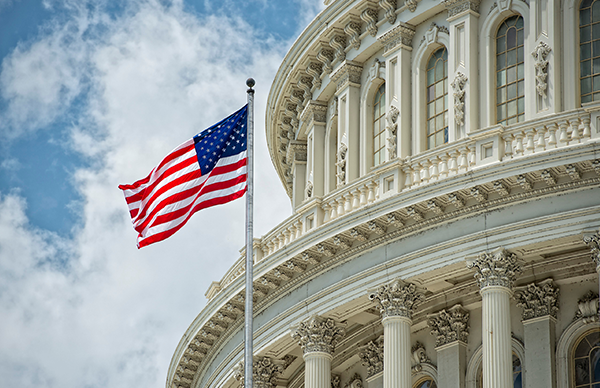In 2019, the Setting Every Community Up for Retirement Enhancement (SECURE) Act increased the Required Minimum Distribution (RMD) age for retirement plan participants from age 70 1/2 to 72. Additionally, it introduced opportunities for Long Term Part Time (LTPT) employees to make deferral contributions to retirement plans in situations where they have not yet met the plan’s eligibility requirements. An updated version of the SECURE Act—the SECURE 2.0 Act of 2022—was signed by President Biden on December 29, 2022, as part of the Consolidated Appropriations Act of 2023. While this omnibus spending bill covers a variety of topics, changes to qualified retirement plans were included to encourage earlier plan participation and a better retirement outcome. SECURE 2.0 modifies the original RMD and LTPT provisions while introducing new rules. Here is what lies ahead:
Effective as of the date of enactment:
- Distributions to terminally ill participants will be exempt from the 10% early withdrawal penalty tax.
- Plan sponsors of a 401(k), 403(b) or 457(b) plan may permit participants to elect their company matching and non-elective contributions be treated as Roth contributions.
Effective for Plan years beginning on or after 1/1/23:
- Required Minimum Distribution (RMD) age increases from 72 to 73.
- If a participant turned 72 prior to 1/1/23 and they have begun receiving their RMD, they will continue to receive their RMD in 2023.
- For participants who turn 73 in 2023, their 1st RMD is due by 12/31/23 or they may opt to delay it until 4/1/24. If they choose the latter, they will take both their 1st and 2nd payment in 2024.
- The penalty assessed to the participant for not taking an RMD timely is reduced from 50% of the amount not distributed to 25%.
- The age increases further to 75 in 2033.
Effective for Plan years beginning on or after 1/1/24:
- RMDs will not be required from Roth 401k or Roth 403(b) balances.
- Currently Roth IRAs are exempt from RMDs but Roth balances in qualified plans are included in the calculation of the required amount to be distributed. Calculations for 2023 RMDs will include Roth 401(k) balances but they will be excluded from future calculations.
- Catch-up contributions to qualified retirement plans must be Roth deferrals.
- This does not apply to participants with compensation under $145,000 in the prior year.
- Matching contributions on student loan repayments.
- Sponsors of a 401(k) Plan, 403(b) Plan or SIMPLE IRA will be able to match student loan repayments made by employees. This also applies to governmental employers who sponsor a 457(b) Plan.
- The employee will make student loan payments on the loan that was taken to pay for qualified higher education expenses and the employer will be permitted to deposit a matching contribution into the qualified plan on their behalf.
- Hardship rules for 403(b) plans will conform to the rules that apply to 401(k) Plans.
- In addition to employee contributions being available as a hardship distribution, earnings on those contributions will be available as well.
- Distributions will be available for domestic abuse survivors.
- The available amount will be the lesser of $10,000 or 50% of the participant’s account and will be exempt from the 10% early withdrawal penalty tax.
- The amount will be eligible to be repaid to the plan over 3 years.
- Emergency distributions up to $1,000 will be available.
- One distribution per year for unforeseeable or immediate financial needs relating to personal or family emergency expenses.
- The distribution will be exempt from the 10% early withdrawal penalty tax.
- The amount will be eligible to be repaid within 3 years.
- No additional emergency distribution during the 3-year period will be available unless repayment has occurred.
- Long Term Part Time (LTPT) Employees will be eligible to contribute elective deferrals to their employers’ 401(k) Plans.
- LTPT Employees are those who have worked at least 500 hours a year for three consecutive years.
- Plan Sponsors may opt to offer matching contributions (subject to vesting schedule).
- Hours of service prior to 2021 are disregarded for both eligibility and vesting.
- This provision does not apply to collectively bargained plans.
Effective for Plan years beginning on or after 1/1/25:
- Long Term Part Time (LTPT) Employees will be eligible to contribute elective deferrals after TWO consecutive years of working 500 hours instead of three years.
- This provision will now apply to both 401(k) Plans and ERISA 403(b) Plans.
- Hours of service prior to 2023 are disregarded for 403(b) Plans.
- Increased Catch-Up Contributions.
- Participants aged 60 to 63 will be eligible to defer larger catch-up contributions.
- Required automatic enrollment provisions.
- New 401(k) and 403(b) plans must include automatic enrollment provisions where the default employee contribution rate is at least 3% but not more than 10%. Each following year, the amount is increased by 1% until it reaches at least 10% but not more than 15%.
- This provision does not apply to businesses with 10 or fewer employees or new companies in business less than 3 years.
- Plans that exist as of December 29, 2022 (date of enactment) are grandfathered and, therefore, are not required to include automatic enrollment provisions.
- Plans that are established in 2023 and 2024 should pay attention to this provision, though, since the provision may apply to them for 2025.
© 2023 Benefit Insights, LLC. All Rights Reserved.







